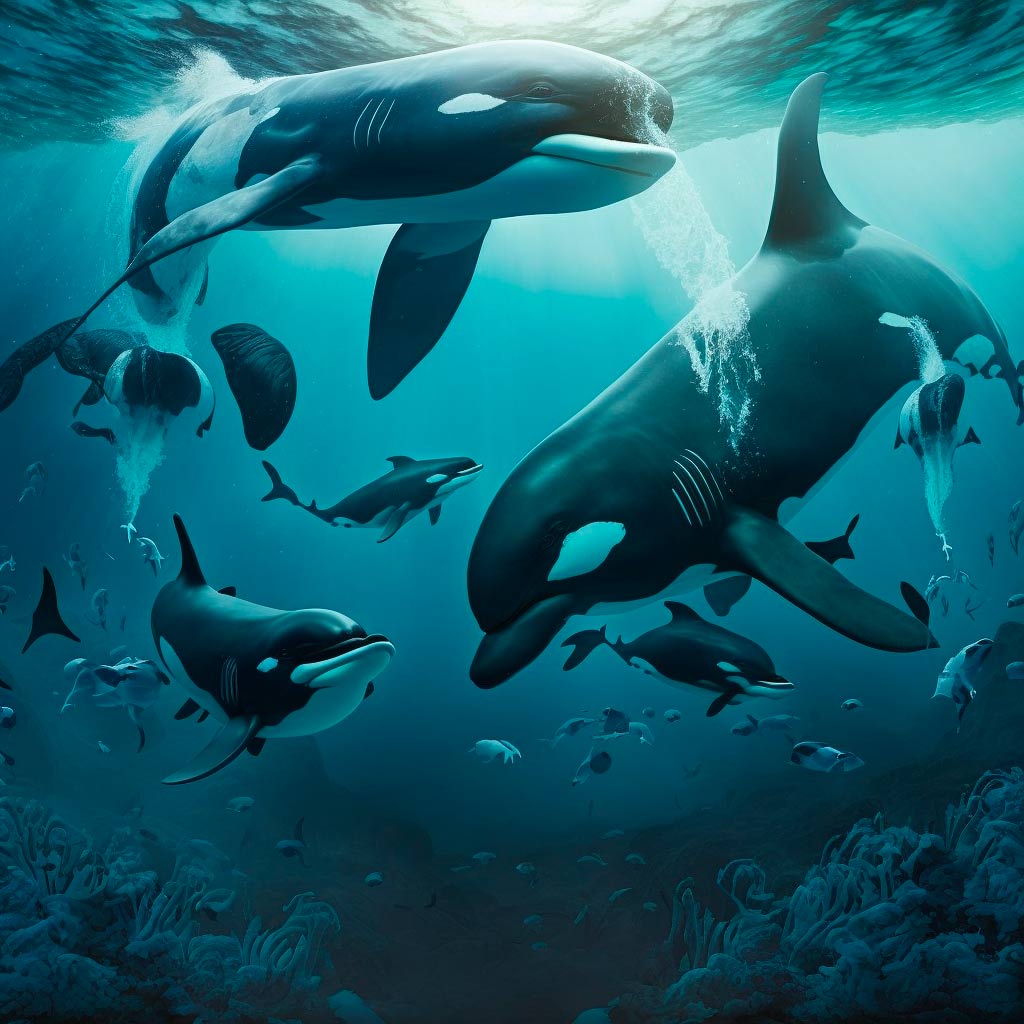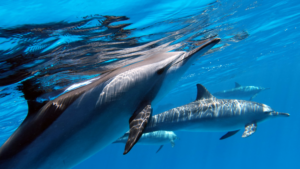Killer whales, also known as orcas, are often thought of as whales due to their large size and predatory behavior. However, they are actually a species of dolphin.
Dolphins are a group of marine mammals that belong to the family Delphinidae. They are closely related to porpoises and share many characteristics, such as a streamlined body shape, a dorsal fin, and the ability to swim at high speeds.
Killer whales are the largest members of the dolphin family and can reach lengths of up to 30 feet. They have a distinctive black and white coloration, with a white belly and black back. Their dorsal fin can be up to 6 feet tall in males and much smaller in females.
Killer whales are apex predators and are known to hunt a variety of prey, including fish, squid, and marine mammals. They are also highly social animals and live in tight-knit family groups called pods. These pods can contain up to 50 individuals and are led by a dominant female, known as the matriarch.
Despite their reputation as “killers,” killer whales are not considered a threat to humans. In fact, they are a popular attraction in marine parks and aquariums, where they are trained to perform tricks and interact with visitors. However, it is important to remember that Orca’s are wild animals and should be treated with kindness and respect.

In recent years, there has been growing concern about the impact of human activities on killer whale populations. Pollution, overfishing, and habitat destruction are all threats to these animals, and conservation efforts are needed to protect them. Despite this, killer whales continue to fascinate and inspire people around the world with their intelligence, beauty, and power.
One major threat to these animals is pollution, as they are at the top of the marine food chain and are therefore highly susceptible to contamination from toxic chemicals such as PCBs and DDT. These pollutants can accumulate in the fat stores of killer whales, leading to reproductive and immune system problems, as well as other health issues. Additionally, killer whales are also at risk from habitat destruction and fragmentation, as well as overfishing, which can reduce the availability of their preferred prey species.
Another major concern for killer whale populations is direct human interactions, such as hunting and capture for display in marine parks. The capture of wild killer whales for display in marine parks has been a controversial issue for decades, and many countries have banned or restricted the practice. However, it still continues in some parts of the world. Furthermore, the noise pollution caused by human activities such as ship traffic and oil and gas exploration can disrupt the communication and echolocation abilities of killer whales, making it difficult for them to find food and mates. Overall, human activities have had a significant negative impact on killer whale populations, and it is important for conservation efforts to be put in place to protect these animals and their habitats.
Would you like to take an Oahu Dolphin tour?
Dolphins and You (25% Off 7am early tour)











